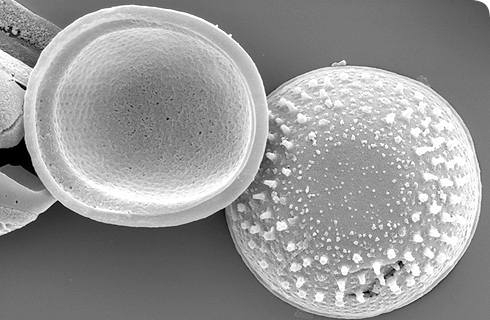Palaeoecology
Sediments accumulate in lakes over time, the accumulated layers containing the remains of diatoms that lived in the lake, forming a chronological record of events in the lake. The deepest sediments contain the oldest specimens. Cores of the sediment at the bottom of the lake are extracted and analysed. The assemblage of different diatoms present in each layer of the core can tell scientists what the environment was like at particular times in history.
Clipeoparvus anatolicus is well preserved within lake cores from Nar Gölü.
Clipeoparvus anatolicus was most abundant during
- the last five years
- AD 340-400
- AD 540-1450
Elevated abundance of Clipeoparvus anatolicus contributing more than 40% of the population, throughout the last 1720 years was generally associated with low numbers of most other species.
The increase in Clipeoparvus anatolicus during the most recent five years coincides with a rise in Synedra acus, a needle-like diatom. The ecological preferences of the better-known species associated with Clipeoparvus anatolicus peaks may indicate the conditions that also favour Clipeoparvus anatolicus.
It appears that Clipeoparvus anatolicus may grow well in weakly alkaline, brackish, eutrophic waters. Clipeoparvus does not form filaments and is common in the lake during the period when a mixed diatom community is present, and when abundant organic material, such as plant remains, are deposited. Therefore it appears that Clipeoparvus anatolicus could be most prolific during spring and summer
